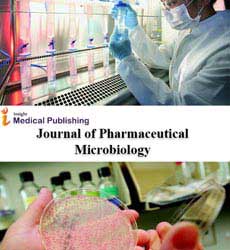Tackling Tuberculosis: Natural Sources as an Inspiration for New Drugs
Veronique Seidel
| Satyajit DS* Medicinal Chemistry and Natural Products Research Group, School of Pharmacy and Biomolecular Sciences, Faculty of Science, Liverpool John Moores University, United Kingdom |
| Corresponding Author: Satyajit DS, Medicinal Chemistry and Natural Products Research Group, School of Pharmacy and Biomolecular Sciences, Faculty of Science, Liverpool John Moores University, United Kingdom E-mail: S.Sarker@ljmu.ac.uk |
| Received: December 13, 2015 Accepted: December 15, 2015 Published: December 21, 2015 |
| Citation: Satyajit DS. Pharmaceutical Microbiology: An Applied Branch of Microbiology. J Pharm Microbiol. 2015, 1:1. doi: doi number |
| Related article at Pubmed, Scholar Google |
Visit for more related articles at Journal of Pharmaceutical Microbiology
| Tuberculosis (TB) is the leading bacterial killer worldwide and has been declared a global public health emergency. The World Health Organisation reported that Mycobacterium tuberculosis, the causative agent of TB, was responsible for 1.5 million deaths and 9 million new TB cases and in 2013. TB rates are particularly high in developing countries where, with HIV/AIDS and malaria, it creates a huge burden on healthcare systems. The current treatment for TB is a lengthy process which involves complex drug regimens, with adverse effects and interactions, and is associated with poor patient compliance. This has led to the gradual emergence of multidrug-resistant (MDR-TB) and more recently, extensively drug-resistant strains of TB (XDR-TB). The treatment of MDR- TB requires expensive drugs and XDR-TB is often incurable. The rise in resistant TB over the past decade is now a worldwide emergency [1,2]. |
| Although drug discovery efforts have intensified in recent years, with two new anti-TB drugs licensed and a few others currently undergoing clinical evaluations, the current drug development pipeline is still insufficient to address such a global health challenge. There remains an urgent need to discover and develop new drugs which could help treat TB, particularly shorten the duration of treatment, target dormant sub-populations of M. tuberculosis and act on drug resistant strains [3]. In addition to that, new antimycobacterial agents are needed to improve the treatment of chronic infections caused by non-tuberculosis mycobacteria which have become difficult to treat [4]. |
| Natural sources represent a unique pool of highly chemicallydiverse substances which have evolved to specifically interact with biological targets and often have an ecological role to counter microbes in the environment [5]. Several studies have already highlighted the potential for natural sources to yield new templates for anti-TB drug design [6-10]. However, many natural sources have yet to be thoroughly investigated chemically and biologically and so there remains a great potential to afford new scaffolds for anti-TB drugs. Intensive research efforts to isolate, identify and elucidate the mode of action of new antimycobacterial natural products are required now so as to provide new lead molecules for drugs to tackle the global burden of TB in the future. |
References |
|
Select your language of interest to view the total content in your interested language
Open Access Journals
- Aquaculture & Veterinary Science
- Chemistry & Chemical Sciences
- Clinical Sciences
- Engineering
- General Science
- Genetics & Molecular Biology
- Health Care & Nursing
- Immunology & Microbiology
- Materials Science
- Mathematics & Physics
- Medical Sciences
- Neurology & Psychiatry
- Oncology & Cancer Science
- Pharmaceutical Sciences
